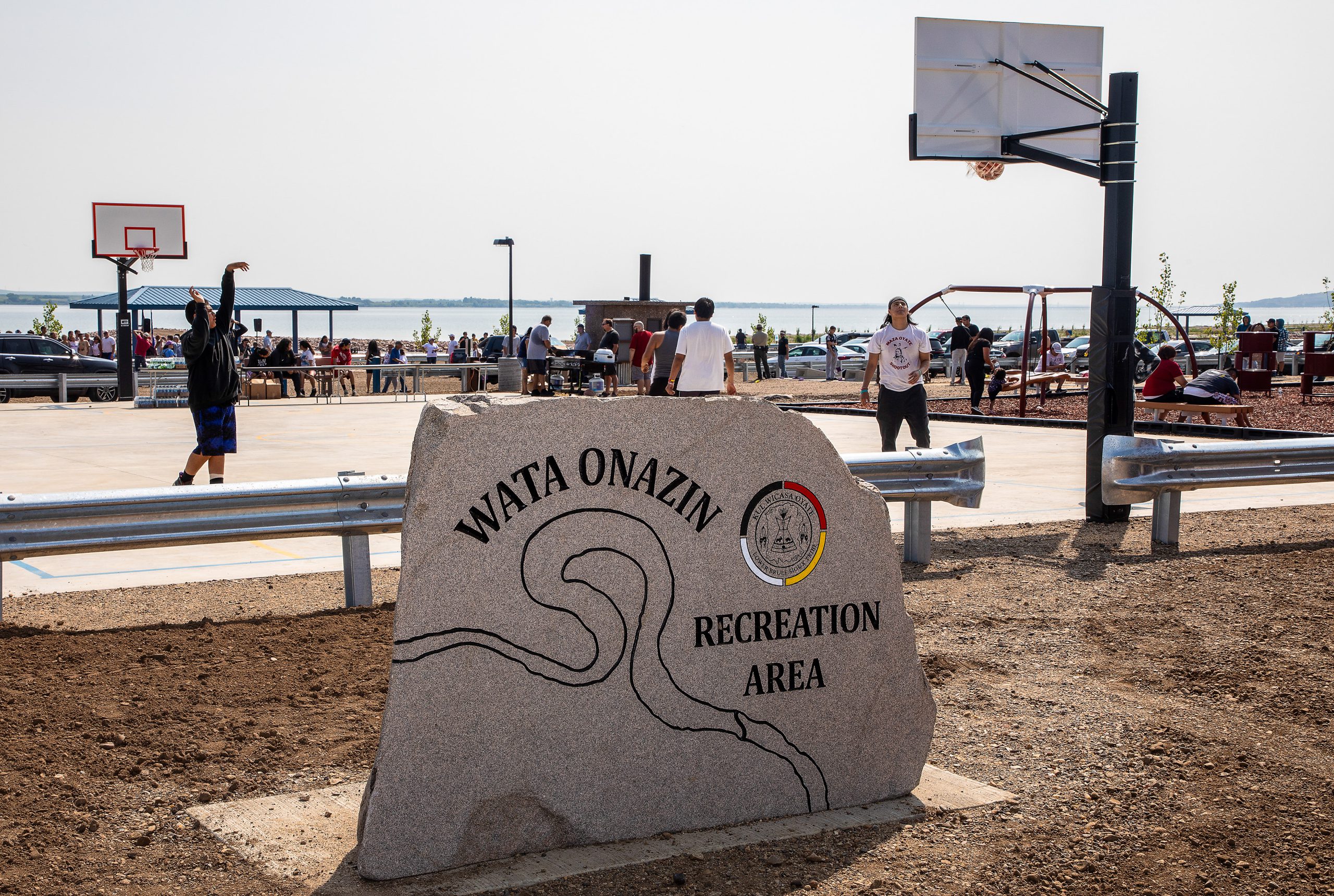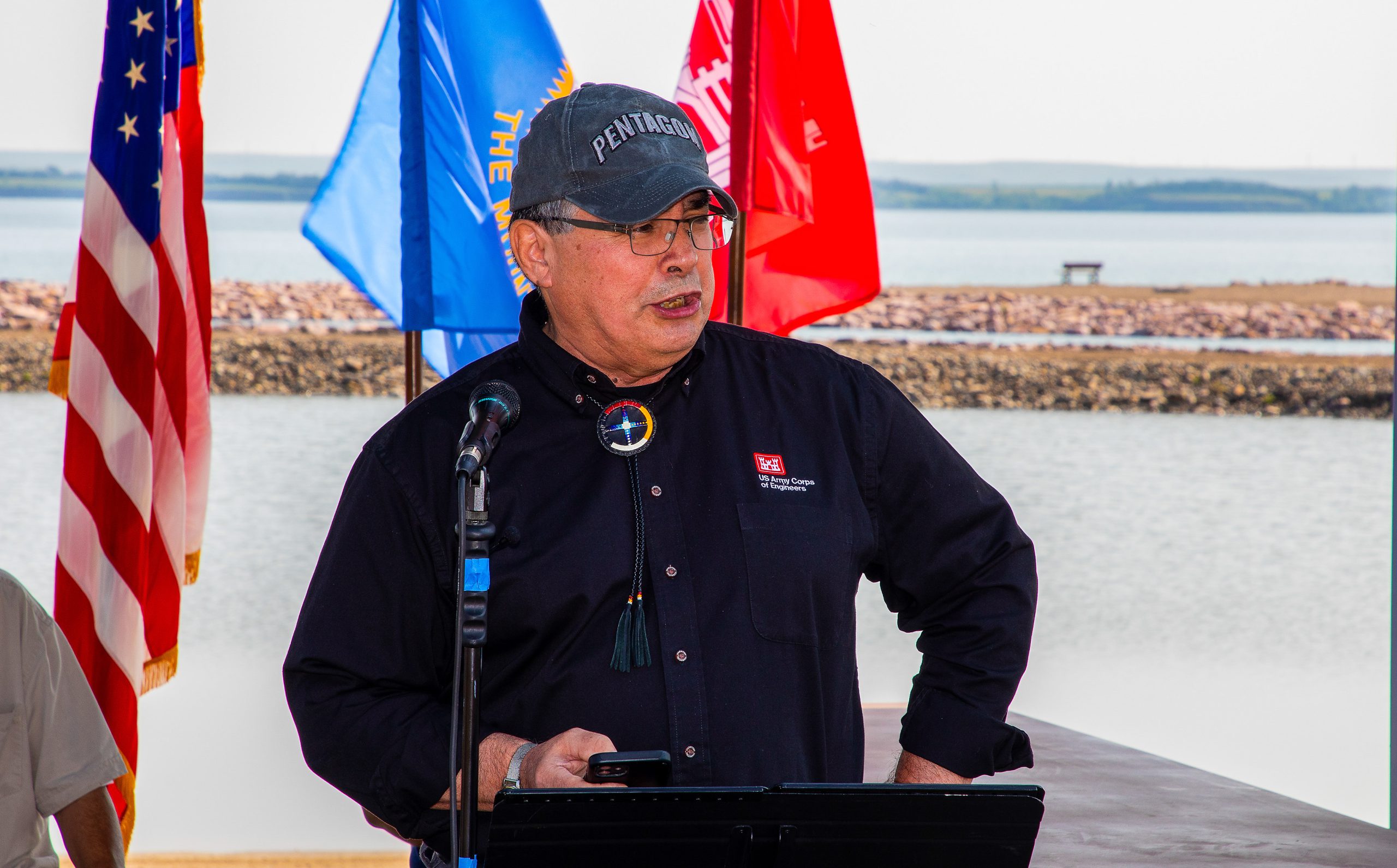Indianz.Com > News > DVIDS: Lower Brule Sioux Tribe protects homelands from climate change

Omaha District completes first construction project under Tribal Partnership Program
Wednesday, August 16, 2023
U.S. Army Corps of Engineers, Omaha District
DOD DVIDS
The U.S. Army Corps of Engineers, Omaha District recently completed an $11.6 million project in partnership with the Lower Brule Sioux Tribe to address erosion of shoreline banks in Lower Brule, South Dakota.
Ice and wave action from Lake Sharpe has steadily eroded LBST land since the Fort Randall and Big Bend Dams became operational in 1956 and 1966. Prior studies have shown that the shoreline along the project area was eroding at a pace of approximately 13 feet per year resulting in more than 500 acres of lost land. As a result, environmental habitats were degraded and wastewater sewage lagoons that service the LBST were threatened.
“The whole part of this project to really remember and think about is protecting the shoreline – to protect the land here now,” said LBST Chairman Clyde Estes during a ceremony July 21 to mark the completion of the project and opening of the Wata Onazin Recreation Area. “This is a very, very important project and is just one of many that we’re trying to keep pushing forward to stabilize our shoreline to protect the erosion of our Tribal homelands.”



Lower Brule Sioux Tribe Chairman Clyde Estes provides opening remarks during a ceremony July 21, 2023, in Lower Brule, South Dakota. The ceremony was held to mark the completion of the Lower Brule Sioux Tribe natural resources preservation and ecosystem restoration Tribal Partnership Program project by the U.S. Army Corps of Engineers, Omaha District. (U.S. Army photo by Delanie Stafford)
DVIDS (Defense Video Imagery Distribution System) is a state-of-the-art, 24/7 operation that provides a timely, accurate and reliable connection between the media around the world and the military serving worldwide. This article is in the public domain.
Search
Filed Under
Tags
More Headlines
Chuck Hoskin: Cherokee Nation helps heal our communities
Native America Calling: Native skin cancer study prompts new concerns about risk
South Dakota Searchlight: Trump terminations hit Indian Arts and Crafts Board
Native America Calling: Regional improvement in suicide statistics is hopeful sign
List of Indian Country leases marked for termination by DOGE
‘Let’s get ’em all done’: Senate committee moves quickly on Indian Country legislation
AUDIO: Senate Committee on Indian Affairs Business Meeting to consider several bills
VIDEO: Senate Committee on Indian Affairs Business Meeting to consider several bills
Native America Calling: The ongoing push for MMIP action and awareness
‘Blindsided’: Indian Country takes another hit in government efficiency push
Native America Calling: A new wave of resistance against Trans Native relatives
Urban Indian health leaders attend President Trump’s first address to Congress
‘Mr. Secretary, Why are you silent?’: Interior Department cuts impact Indian Country
Cronkite News: Two Spirit Powwow brings community together for celebration
Native America Calling: Native shows and Native content to watch
More Headlines
Native America Calling: Native skin cancer study prompts new concerns about risk
South Dakota Searchlight: Trump terminations hit Indian Arts and Crafts Board
Native America Calling: Regional improvement in suicide statistics is hopeful sign
List of Indian Country leases marked for termination by DOGE
‘Let’s get ’em all done’: Senate committee moves quickly on Indian Country legislation
AUDIO: Senate Committee on Indian Affairs Business Meeting to consider several bills
VIDEO: Senate Committee on Indian Affairs Business Meeting to consider several bills
Native America Calling: The ongoing push for MMIP action and awareness
‘Blindsided’: Indian Country takes another hit in government efficiency push
Native America Calling: A new wave of resistance against Trans Native relatives
Urban Indian health leaders attend President Trump’s first address to Congress
‘Mr. Secretary, Why are you silent?’: Interior Department cuts impact Indian Country
Cronkite News: Two Spirit Powwow brings community together for celebration
Native America Calling: Native shows and Native content to watch
More Headlines
